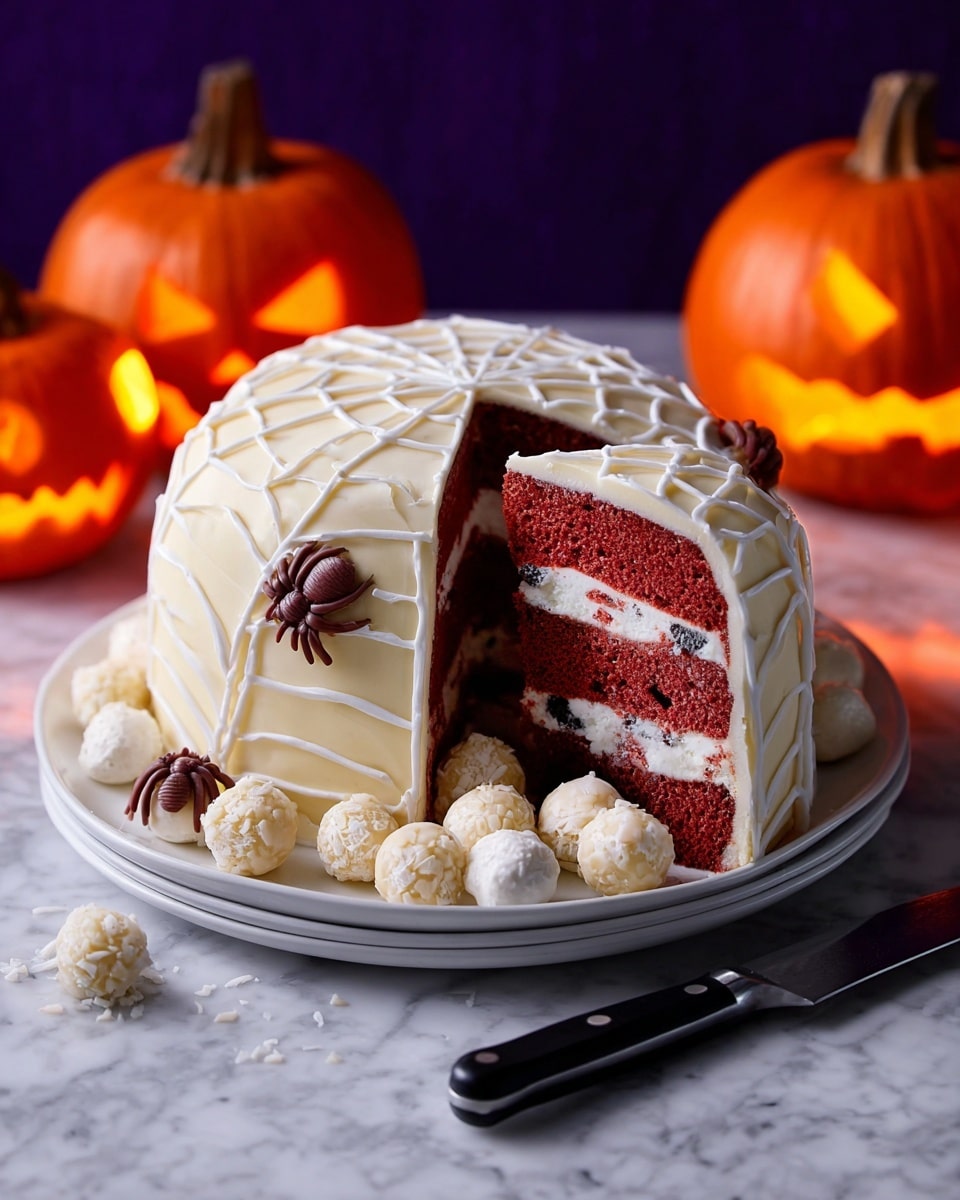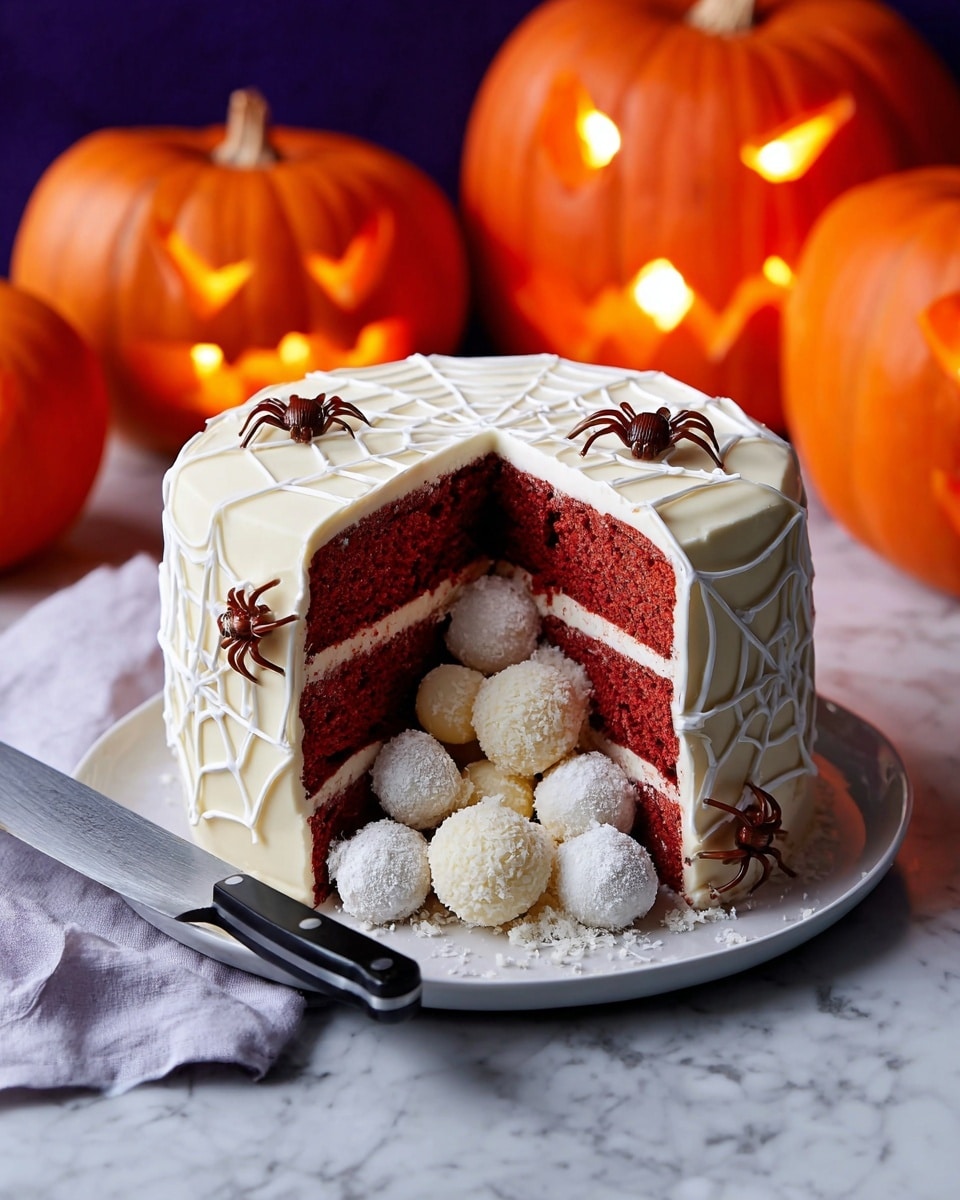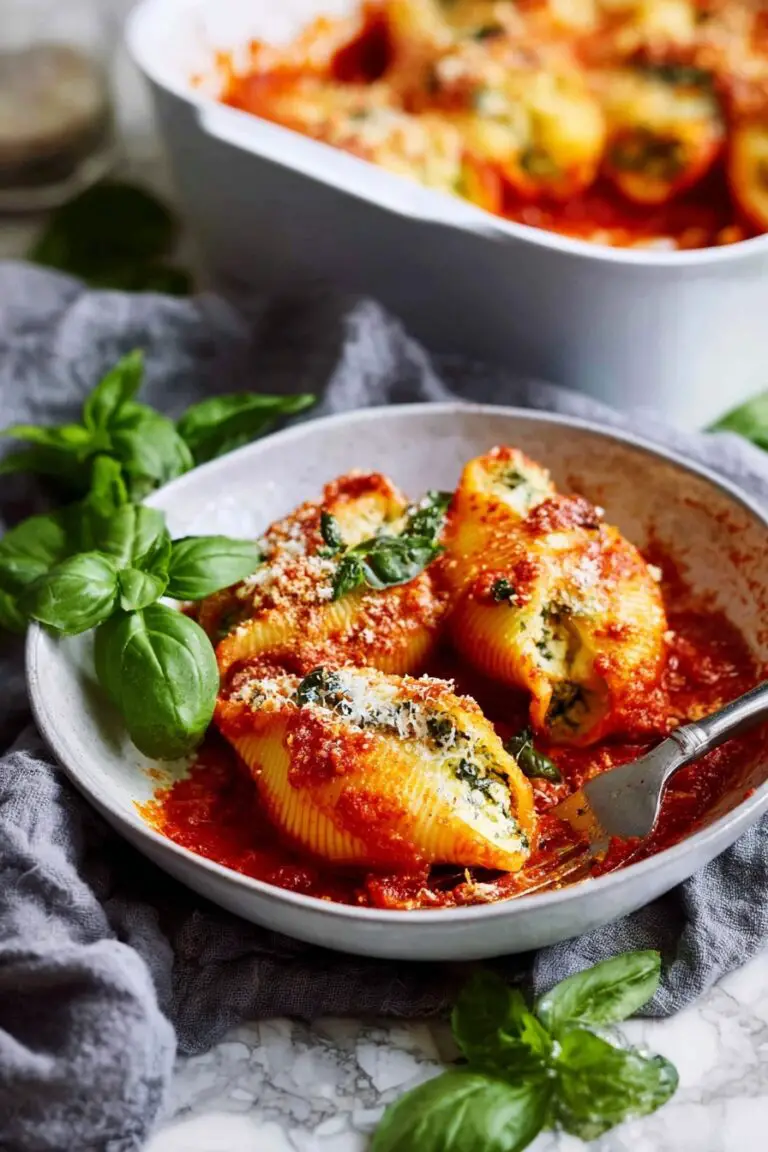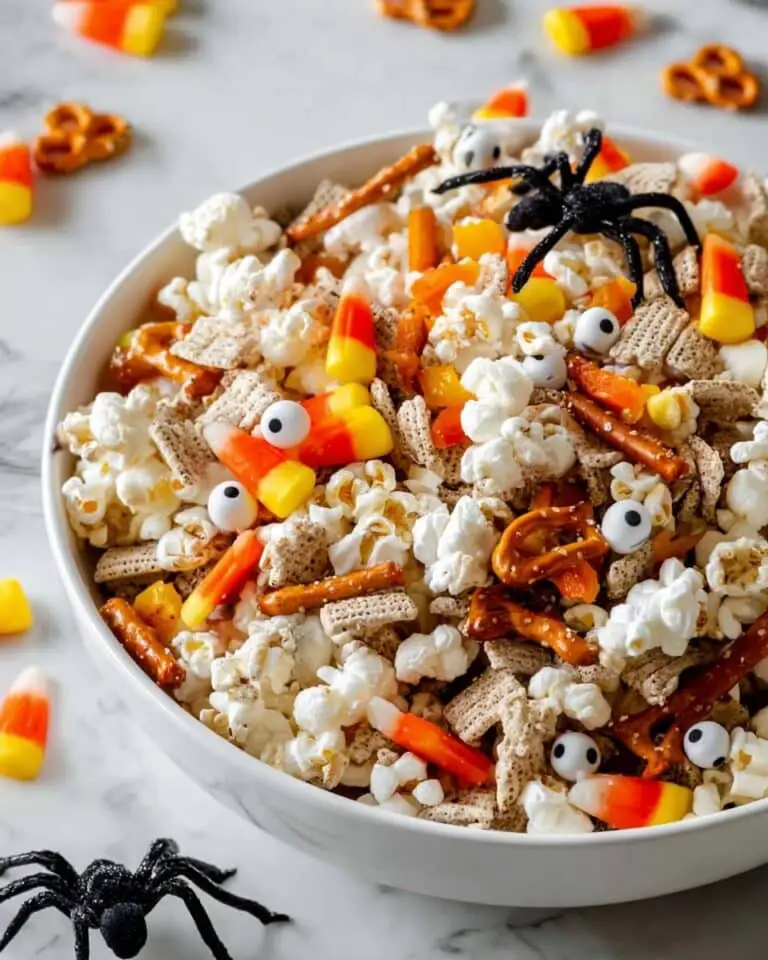If you love a cake that’s both fun and a little bit spooky, you’re going to adore this Spider’s Nest Cake Recipe. I absolutely love how it looks — those hidden ‘spider eggs’ tucked inside make for a playful surprise, and the marshmallow web on top just takes it to another level. Whether you’re baking for a Halloween party, a kid’s birthday, or just want to wow your friends, this recipe is fun to make and tastes amazing. Stick with me, and I’ll share all the tips to make sure your cake turns out perfect!
Why You’ll Love This Recipe
- Showstopping Presentation: The spider web made from melted marshmallows and the hidden spider eggs inside make this cake a real conversation starter.
- Deliciously Moist Cake: The buttermilk and cocoa powder blend ensures every bite is rich, tender, and packed with flavor.
- Perfect Balance of Spices: The cinnamon buttercream adds a subtle warmth that complements the chocolate notes beautifully.
- Fun Baking Experience: Cutting out layers and shaping hidden treats brings a playful twist that’s perfect for baking with kids or friends.
Ingredients You’ll Need
The ingredients in this Spider’s Nest Cake Recipe work together to build a moist, fluffy cake with layers that hold their shape well, while the buttercream and decorations add personality and flavor. Grab good-quality butter and fresh eggs since they really make a difference in texture and taste.
- Butter: Softened butter is essential for that creamy, fluffy cake batter and smooth buttercream.
- Caster sugar: Fine sugar helps dissolve quickly into the batter for a light crumb.
- Eggs: Beaten eggs bring structure and richness; make sure they’re at room temperature for even mixing.
- Vanilla extract: Just a splash elevates the flavor without overpowering the cocoa and spices.
- Red food-colouring gel: Adds the eye-catching red hue that makes your spider’s nest stand out.
- Plain flour: The base of the cake, giving it body and structure.
- Cocoa powder: Adds chocolate depth and a hint of bitterness to balance the sweetness.
- Buttermilk: This keeps the cake moist and tender while reacting with baking soda.
- Bicarbonate of soda: The leavening agent that helps the cake rise perfectly.
- Cider vinegar: Reacts with the bicarb for lift and adds a mild tanginess to balance flavors.
- Slightly salted butter (for icing): Salted butter adds just a touch of savory contrast to the sweet buttercream.
- Icing sugar: Powdered sugar for a silky, smooth frosting.
- Milk: Helps loosen the buttercream for spreading.
- Ground cinnamon: Brings warmth and a spicy kick to the buttercream.
- Stem ginger: Chopped finely, it adds a zingy surprise in the spider eggs.
- White chocolate: Used for coating the spider eggs—makes them look glossy and delicious.
- Desiccated coconut: Rolls the chocolate-coated eggs to mimic spider eggs’ texture.
- Chocolate-coated raisins: Create ‘flies’ with almond wings – a fun edible decoration.
- Flaked almonds: Used as wings for the flies.
- Ready-to-roll fondant icing: For a smooth finish that’s perfect to decorate over.
- White mini-marshmallows: Melted and pulled into cobwebs – so much fun to make!
Variations
I love to tweak this Spider’s Nest Cake Recipe depending on the occasion or who’s eating it. Sometimes I swap out the cinnamon for nutmeg or add orange zest in the batter for a citrus twist. Feel free to experiment and make it your own!
- Chocolate Lovers’ Variation: Add a layer of chocolate ganache between the cake layers for extra indulgence – my family goes crazy for this version.
- Gluten-Free Alternative: Use a gluten-free flour blend instead of plain flour; just keep a close eye on baking times as it might bake quicker.
- Vegan Version: Substitute eggs with flax or chia eggs, use vegan butter, and plant-based milk – I haven’t tried this extensively but many friends had great results.
- Seasonal Twist: Switch stem ginger for crystallized ginger in winter holidays for a sparkly festive feel.
How to Make Spider’s Nest Cake Recipe
Step 1: Prepare Your Cake Layers
First things first, preheat your oven to 180°C (fan 160°C) and prepare three 20cm (8-inch) sandwich tins by greasing and lining them with baking parchment. This part is key, so your cakes don’t stick and come out cleanly. Next, beat the softened butter and caster sugar together until the mixture is light and fluffy – I usually set my electric mixer on medium and keep an eye on the texture, it takes about 3-5 minutes. Then, slowly add the beaten eggs a little at a time, beating well after each addition to keep the mixture smooth and prevent curdling. Don’t forget the vanilla extract and all three tubes of red food coloring – this is what gives your cake that eerie red glow. Trust me, the kids will be amazed!
Step 2: Mix in the Dry Ingredients and Bake
Sift together the plain flour, cocoa powder, and a pinch of salt. Then, alternate adding one-third of the flour mixture and one-third of the buttermilk to the wet ingredients, beating gently between each addition to maintain that light texture. In a small bowl, mix the bicarbonate of soda with cider vinegar – you’ll see it fizz slightly; this reaction is what helps the cake rise beautifully. Beat this mixture into the batter until just combined. Divide your batter evenly across the three tins and bake for 28-30 minutes or until a skewer inserted in the center comes out clean. When done, leave the cakes in their tins for about 10 minutes before turning them out onto a wire rack to cool completely. Patience here pays off – the cake layers shouldn’t be warm when you slice them!
Step 3: Creating the Spider Eggs
Once cool, cut each cake horizontally to yield six layers total. Here’s the fun part: using an 8cm biscuit cutter, cut out a circle from the center of four layers and reserve those rounds – these become your spider eggs! Crumble the rounds into a bowl and mix with three heaped tablespoons of your prepared buttercream and the finely chopped stem ginger. I discovered this trick of mixing in ginger with the crumbs gives the clusters a spicy zing that balances the sweetness perfectly. Shape this mixture into little balls about 1.5cm wide. Chill or freeze these while you melt the white chocolate in a heatproof bowl over simmering water. Dip each ball in the chocolate, roll in desiccated coconut for a fuzzy “egg” look, and chill again until set. This step is easier if you work on a lined tray and don’t rush—the chocolate needs to set fully for best texture.
Step 4: Assemble Your Spider’s Nest
Make the flies by slicing each chocolate-coated raisin on both sides and slipping in flaked almond wings. Now, stack your cake starting with a solid layer, then spread a layer of buttercream, and place a holed layer on top. Repeat to create a cavity in the center for your spider eggs. Pack in as many eggs as you can fit—it’s like a secret treasure trove inside your cake! Finish with the last full layer and cover the entire cake with buttercream as a crumb coat. Chill for at least 30 minutes so everything firms up — this is a crucial step for a smooth finish with the fondant.
Step 5: Decorating and Adding the Web
Dust a clean surface with icing sugar and roll the fondant icing to cover your cake smoothly. I like to use a rolling pin to pick up and drape the fondant over carefully to avoid tears. Trim the edges at the base and chill briefly. Then comes the magical marshmallow web: microwave the mini-marshmallows in short bursts until melted, stirring to cool slightly before stretching them out with your fingers to create thin, wispy cobwebs. Drape these all over the cake messily—don’t worry about perfection, the best webs are a bit chaotic! Finally, place your almond-winged flies strategically on the web, and if you want, top it all off with a small plastic (or edible!) spider for an extra spooky touch.
Pro Tips for Making Spider’s Nest Cake Recipe
- Even Layer Cutting: I use a serrated knife and take my time slicing the cake layers evenly; it helps to chill the cake first for cleaner cuts.
- Chill Between Steps: Chilling the cake between assembly steps makes it so much easier to work with the fondant and marshmallow web without everything slipping around.
- Fondant Handling: Dust your rolling pin generously with icing sugar to prevent sticking when lifting the fondant over the cake.
- Spider Eggs Consistency: If the mixture feels too sticky, chill it longer—this makes rolling the balls much simpler and cleaner.
How to Serve Spider’s Nest Cake Recipe
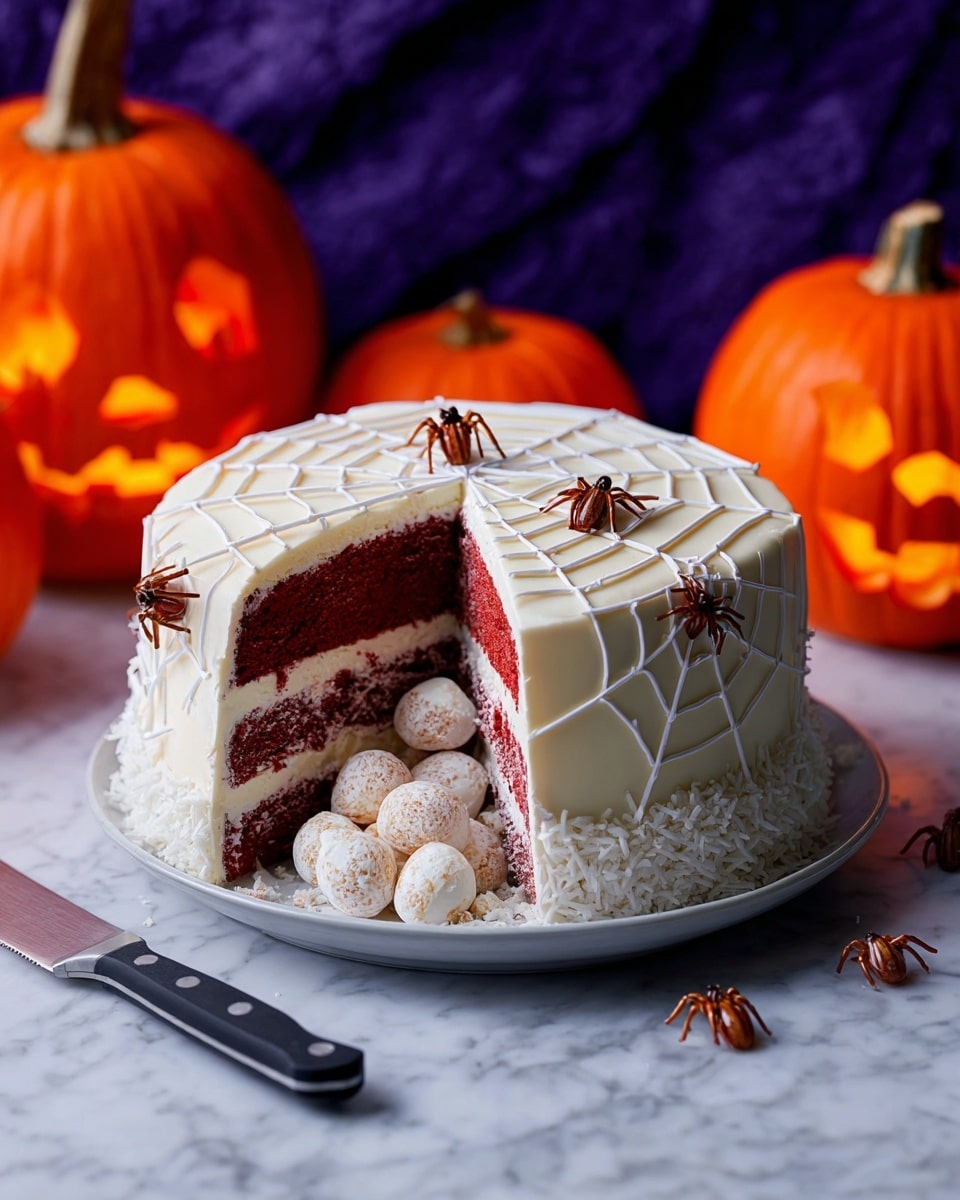
Garnishes
I usually keep the garnishes true to the spooky theme — the marshmallow web and almond-winged flies are my go-tos. You can also dust a little extra icing sugar over the top for a “morning dew” effect on the web, which looks really magical. If you want a brighter pop, a few edible silver beads nestled in the web add a bit of sparkle.
Side Dishes
This cake is quite rich on its own, so I like pairing it with a simple, tangy fruit salad or a scoop of vanilla ice cream. The freshness helps cut through the sweetness and balances the flavors nicely. For parties, a cup of spiced tea or coffee complements the cinnamon buttercream perfectly.
Creative Ways to Present
For Halloween, I like placing the cake on a black or orange cake stand and scattering edible “spiders” around it for a deadly effect. Another creative idea is to light small battery-operated flameless candles nearby to cast spooky shadows on the web. If you’re serving kids, consider adding a little plastic spider ring as a party favor alongside each slice!
Make Ahead and Storage
Storing Leftovers
Once assembled, this Spider’s Nest Cake keeps well covered at room temperature for up to 2 days, but I prefer to store it in the fridge because of the buttercream. Make sure it’s in an airtight container or wrapped tightly with plastic wrap to prevent the fondant from drying out.
Freezing
I’ve frozen leftover cake layers before (without fondant or marshmallow webs) by wrapping them individually in plastic wrap and aluminum foil. Thaw in the fridge overnight and then assemble and decorate fresh. Freezing the whole assembled cake can affect the texture of the marshmallow web and fondant, so I don’t recommend it.
Reheating
Since this is a cake best served cool, reheating isn’t usually necessary, but if you want to warm slices slightly, I recommend a few seconds in the microwave just to take the chill off, without melting the buttercream or decorations.
FAQs
-
What exactly are the ‘spider eggs’ in the Spider’s Nest Cake Recipe?
Great question! The spiders’ eggs are little cake balls made from crumbled cake pieces mixed with buttercream and chopped stem ginger, then coated in white chocolate and rolled in coconut. They look like fuzzy eggs and hide inside the cake’s hollow layers for a fun surprise.
-
Can I make this cake without red food coloring?
You can, but the red food coloring is what gives the cake its signature “spider’s nest” look — think deep, rich red tones like a spooky forest floor. If you skip it, the cake will be more classic chocolate color, which is still tasty but less dramatic.
-
How do I make the marshmallow web without it sticking to everything?
After melting the marshmallows, let them cool just a bit before pulling so they don’t stick terribly to your fingers. Dust your hands lightly with icing sugar to help, and don’t overwork the strands—thin, wispy webs happen naturally if you’re gentle.
-
Can I prepare the cake a day ahead?
Absolutely! In fact, I recommend assembling and chilling the cake the day before serving. The flavors meld nicely, and chilling helps the decorations stay firm. Just add the marshmallow webs and flies a few hours before serving for best freshness.
Final Thoughts
This Spider’s Nest Cake Recipe holds such a special place in my heart — it’s the kind of cake that turns baking into a playful adventure and brings smiles all around the table. I remember making this for a Halloween party and seeing the kids’ faces light up when we cut into that cavity full of ‘spider eggs.’ It’s fun, a bit spooky, and utterly delicious. If you want to impress with something different that still tastes fabulous, give this recipe a go. You’ll enjoy every messy, sweet, and sticky moment of making your very own spider’s nest!
Print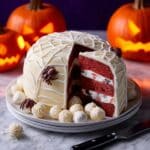
Spider’s Nest Cake Recipe
- Prep Time: 2 hours
- Cook Time: 45 minutes
- Total Time: 4 hours including chilling and setting
- Yield: 24 servings
- Category: Dessert
- Method: Baking
- Cuisine: British
Description
This Spider’s Nest Cake is a festive and fun dessert perfect for Halloween or any spooky-themed celebration. Featuring vibrant red velvet sponge layers with hidden ‘spider eggs’ made from cake crumbs, stem ginger, and white chocolate, wrapped in coconut, it combines a rich cinnamon buttercream with a smooth fondant finish. The cake is decorated with marshmallow cobwebs and almond-winged chocolate raisin flies for an eye-catching and delicious centerpiece.
Ingredients
For the Cake
- 180g (6oz) butter, softened, plus extra for greasing
- 400g (13oz) caster sugar
- 3 eggs, beaten
- 2 tsp vanilla extract
- 3 x 10g tubes red food-colouring gel
- 500g (1lb) plain flour
- 50g cocoa powder
- 1 x 284ml carton buttermilk
- 1½ tsp bicarbonate of soda
- 1 tbsp cider vinegar
For the Buttercream Icing
- 300g slightly salted butter, softened
- 225g icing sugar, sifted, plus extra for dusting
- 1½ tbsp milk
- 2 tsp ground cinnamon
- ½ tbsp vanilla extract
For the Hidden Spider’s Eggs
- 3 balls stem ginger, finely chopped
- 175g (6oz) white chocolate, melted
- 50g (2oz) desiccated coconut
For the Flies
- 8 chocolate-coated raisins
- 16 flaked almonds
To Decorate
- 1 x 1kg block ready-to-roll fondant icing
- 170g (6oz) white mini-marshmallows (for the cobwebs)
Instructions
- Prepare the Cake Pans: Preheat your oven to gas mark 4, 180°C, or fan 160°C. Grease and line three 20cm (8in) sandwich tins to prevent sticking and ensure even baking.
- Make the Cake Batter: In a large mixing bowl, beat the softened butter and caster sugar together using an electric whisk until the mixture becomes light and fluffy. Gradually add the beaten eggs one at a time, mixing thoroughly after each addition. Incorporate the vanilla extract and red food colouring gel, blending to distribute the colour evenly.
- Combine Dry Ingredients: Sift together the plain flour, cocoa powder, and 1 teaspoon of salt into a separate bowl. Add a third of this flour mixture to the butter and egg mixture, followed by a third of the buttermilk. Repeat this alternating addition until all the flour and buttermilk have been incorporated.
- Add Leavening Agents: In a small bowl, mix the bicarbonate of soda with the cider vinegar, then beat this into the cake batter to help the cake rise and enhance texture.
- Bake the Cake Layers: Divide the batter evenly among the three prepared tins. Bake in the preheated oven for 28–30 minutes, or until a skewer inserted into the centre comes out clean. Allow the cakes to cool in the tins for 10 minutes, then turn them out onto a wire rack to cool completely.
- Prepare Cake Layers and Crumbs: Once cooled, slice each cake horizontally to create six layers in total. Using an 8cm (3 ½ in) biscuit cutter, cut out a circle from the center of four layers and carefully remove the cut sections. Crumble these removed centers into a bowl to use for the hidden spider’s eggs.
- Make the Buttercream Icing: Beat the softened butter for 5–8 minutes until soft and fluffy. Gradually add half the sifted icing sugar, beating on low speed for 3–5 minutes. Incorporate the remaining icing sugar, then mix in the milk, ground cinnamon, and vanilla extract until combined. Chill the buttercream in the refrigerator until needed.
- Prepare Hidden Spider’s Eggs: Mix the reserved cake crumbs with 3 heaped tablespoons of buttercream and the finely chopped stem ginger. With clean hands, form the mixture into small balls approximately 1.5cm (¾ in) wide. Place the balls on a tray, cover with clingfilm, and chill for at least 1 hour or freeze for 15 minutes.
- Coat the Spider’s Eggs: Melt the white chocolate in a heatproof bowl set over simmering water. Dip each ball into the melted chocolate, letting excess drip off, then roll them in desiccated coconut. Place the coated balls on baking paper and chill until set, about 30 minutes.
- Create the Flies: Make a small slit on each side of the chocolate-coated raisins and insert flaked almonds into the slits to mimic wings. Set aside for decoration.
- Assemble the Cake Layers: Place one whole cake layer without a hole on your cake stand and spread with a layer of buttercream. Alternate with the cake layers that have holes, spreading buttercream between each. Fill the central cavity with as many spider’s eggs as will fit, then top with the final whole cake layer. Spread the remaining buttercream over the top and sides for a crumb coat. Chill the assembled cake for at least 30 minutes.
- Decorate with Fondant: Dust a clean surface with icing sugar and roll out the fondant icing to a size that will cover the cake’s top and sides. Carefully lift the fondant onto the cake and smooth it down. Trim excess fondant at the base.
- Make Marshmallow Cobwebs: Melt the mini-marshmallows in a microwave-safe bowl in 30-second intervals until melted. Let cool slightly, then stretch and pull the marshmallow with your fingers to create thin, web-like strands. Drape the strands messily over the fondant-covered cake.
- Add Final Decorations: Stick the almond-winged flies onto the marshmallow cobwebs. For extra effect, top the cake with a plastic spider to complete the spider’s nest theme.
Notes
- Ensure cakes are completely cooled before cutting and assembling to prevent buttercream from melting.
- Use clean hands when shaping spider eggs to keep the mixture intact and hygienic.
- Fondant can be tricky to work with; dust surfaces well to prevent sticking.
- Marshmallow cobwebs are best made fresh and used immediately as they can harden quickly.
- If desired, substitute stem ginger with crystallized ginger for a stronger ginger flavor.
- The cake layers can be baked a day ahead and stored wrapped tightly to save time on the day of assembly.
Nutrition
- Serving Size: 1 slice (approx. 1/24th cake)
- Calories: 568 kcal
- Sugar: 69 g
- Sodium: 0.4 g
- Fat: 23 g
- Saturated Fat: 13 g
- Unsaturated Fat: 7 g
- Trans Fat: 0 g
- Carbohydrates: 88.2 g
- Fiber: 2.4 g
- Protein: 5 g
- Cholesterol: 70 mg

